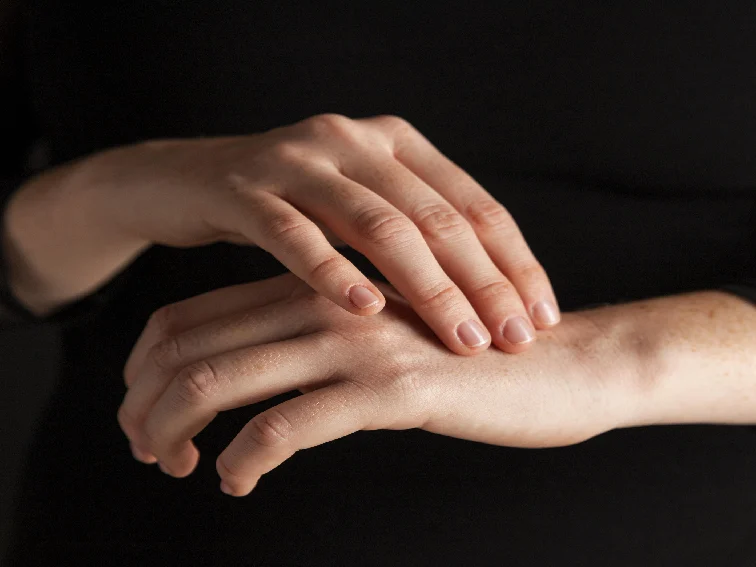Ganglion cyst treatment in Hyderabad – Dr. Praharsha Mulpur
manifest as masses that tend to emerge along the tendons or joints, primarily on the wrists or hands. It is also possible for them to develop in the ankles and feet. Ganglion cysts are usually spherical or elliptical in shape and are filled with a jellylike substance. They are not tumors
Ganglion cysts of a small size can resemble a pea. The size can alter. If a nearby nerve gets pressed, ganglion cysts can cause pain. Occasionally, they impact the mobility of the joints.
Features of Ganglion Cysts
Ganglion cysts typically exhibit these characteristics:
Location-The common location where ganglion cysts form is along the tendons or joints situated on the wrists or hands. Ankles and feet are next areas where ganglion cysts may form. Cysts can also develop in close proximity to other joints.
The shape of ganglion cyst is either circular or elliptical. Some cysts are so small to sense. Cysts tend to grow in size over time due to movements in the joint.
Pain-Typically, ganglion cysts do not cause any pain. In case a cyst applies pressure on a nerve or any other structures, it may result in muscle weakness, numbness, tingling, or pain.
When to See a doctor?
If you detect a lump or experience discomfort in your wrist, hand, ankle, or foot, it is advisable to consult an orthopedic doctor. The doctor will make a diagnosis to help assist whether management is necessary.
Causes
The reason behind a ganglion cyst remains unknown. A small water balloon-like structure on a stem originates from a tendon’s lining or joint to form the cyst. The cyst contains a viscous liquid that is similar to the one found in the joints or the areas surrounding tendons.
What are the risk factors for Ganglion Cysts?
Factors that can raise the likelihood of developing a ganglion cyst include:
Age and gender– Although anyone is susceptible to developing ganglion cysts, women aged 20 to 40 years may most often have them.
Osteoarthritis- Individuals with degenerative arthritis in the finger joints located closest to the nail beds have an increased likelihood of developing ganglion cysts in close proximity to those joints.
Tendon or joint injury– An injury to a tendon or joint increases the likelihood of developing a ganglion cyst.
Diagnosis
Your orthopedic doctor, during a physical examination, may apply pressure on the cyst to determine if it causes pain. To determine whether the cyst is solid or filled with fluid, your doctor shines it by passing a light through it. To confirm the diagnosis and exclude other conditions like arthritis or a tumor, your doctor orders imaging tests such as X-rays, ultrasounds, or MRIs. Confirming the diagnosis is also possible by extracting fluid from the cyst with a needle. Ganglion cyst fluid is usually clear and dense.
Ganglion Cyst Treatment in Hyderabad
If you have a painless ganglion cyst, with no other symptoms, your doctor may choose an observational approach where they monitor it and do not treat it unless necessary. Often, the cysts grow and shrink. Some go away on their own.
A ganglion cyst can grow in size with activity. Wearing a Brace or Splint can help because, they keep the joint still. It might help for a time to shrink the cyst and relieve pain and pressure on nerves. However, long-term use can weaken surrounding nerves and muscles.
If the cyst is hindering the mobility of your joint treatment is necessary. For a ganglion cyst that causes problems, an orthopedic doctor drains the cyst with a needle. If the cyst is causing severe problems, then it is removed surgically.
For the best ganglion cyst treatment, meet Dr. Praharsha Mulpur


